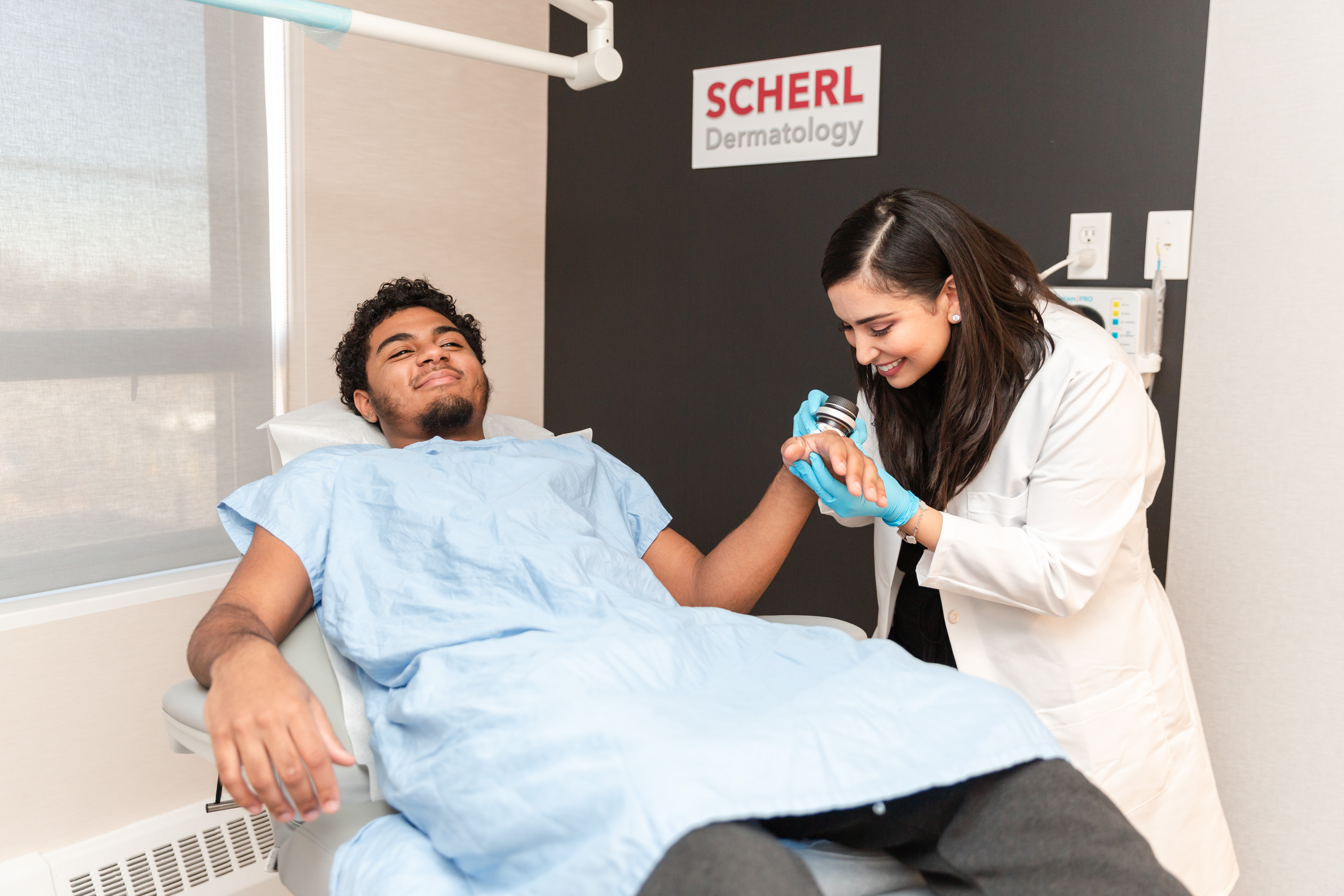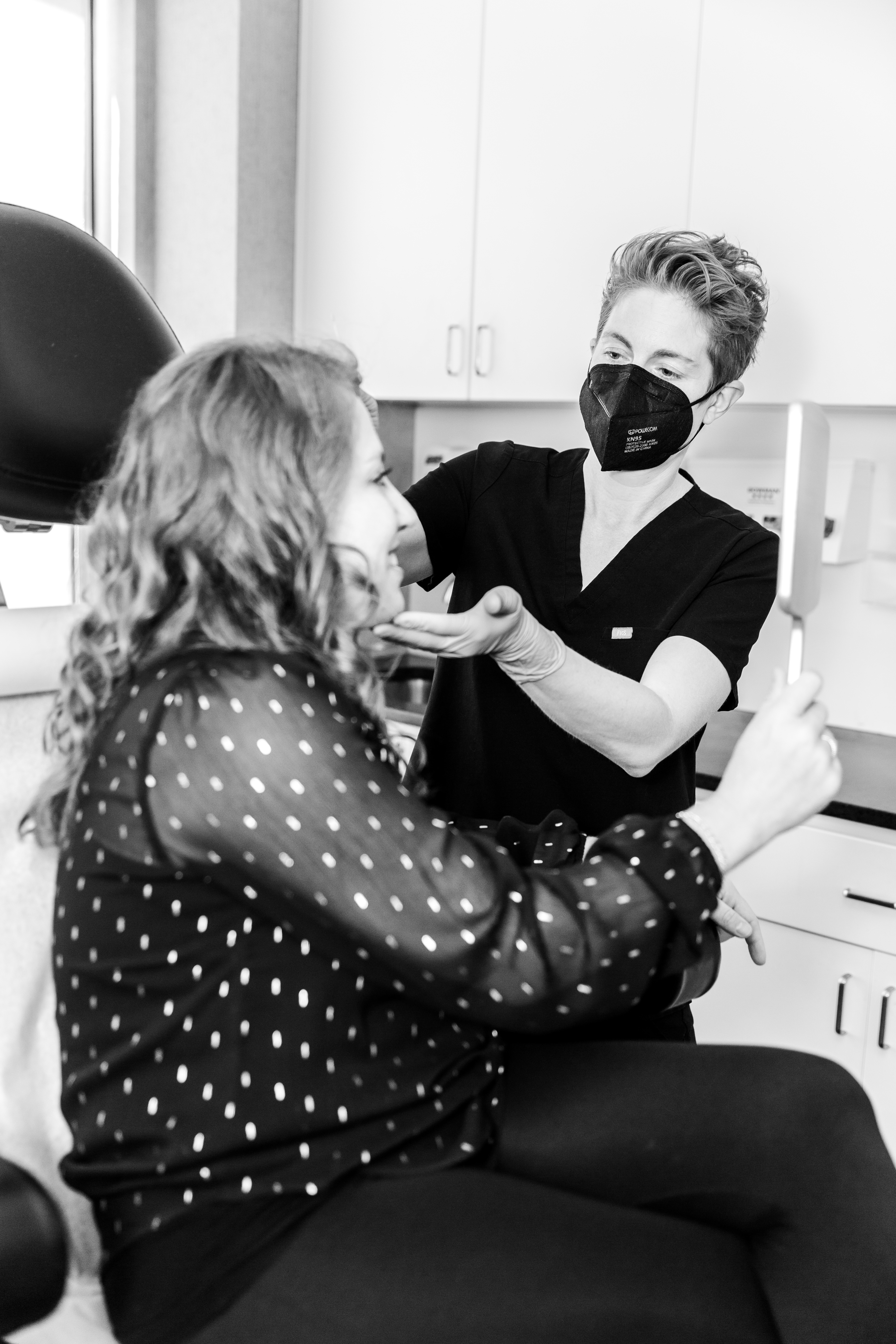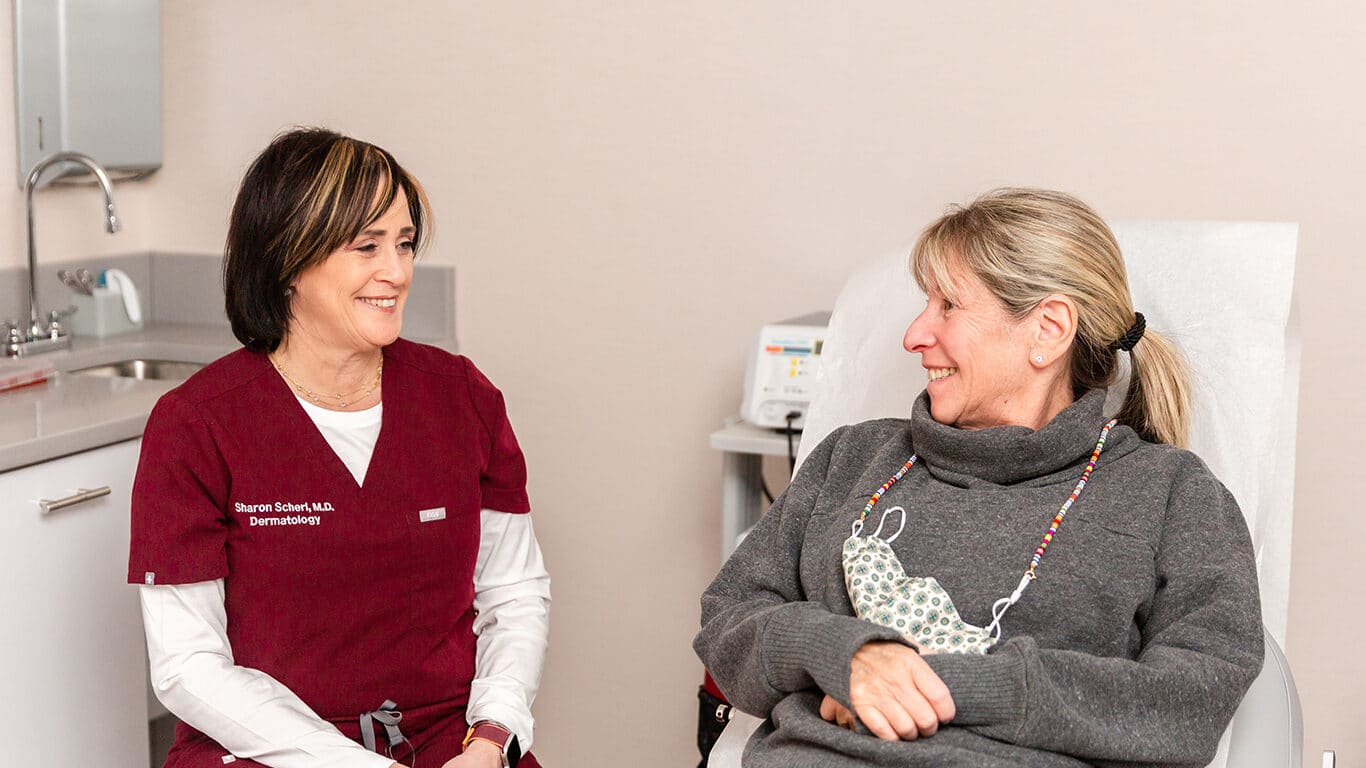
Seborrheic Dermatitis Treatment in Englewood Cliffs, NJ
Seborrheic dermatitis is a very common skin condition that causes a red, crusty, scaly rash.
When seborrheic dermatitis appears, the skin tends to have a:
- Reddish color
- Swollen and greasy appearance
- White or yellowish crusty scale on the surface
One or more of these rashes can appear on the body. Sometimes, the affected skin itches. Seborrheic dermatitis can look like psoriasis, eczema, or a skin allergy.
Cradle Cap: A Type of
Seborrheic Dermatitis
Many infants get cradle cap. This is a type of seborrheic dermatitis (seb-uh-ree-ick dur-muh-tahy-tis) that develops in babies. Scaly, greasy patches form on the baby’s scalp. The patches can become thick and crusty, but cradle cap is harmless. Cradle cap usually goes away on its own within a few months.
Babies also get seborrheic dermatitis in their diaper area and elsewhere. In the diaper area, the red rash often is mistaken for diaper rash. A few babies get seborrheic dermatitis that covers much of the body with red, scaly patches.
No matter where the seborrheic dermatitis forms, it tends to permanently disappear between 6 months and 1 year of age.
Seborrheic dermatitis is long-lasting in adults: When an adult gets seborrheic dermatitis, the condition can come and go for the rest of the person’s life. Flare-ups are common when the weather turns cold and dry. Stress also can trigger a flare-up. The good news is that treatment can reduce flare-ups and bring relief.
Signs and Symptoms of
Seborrheic Dermatitis
The signs and symptoms of seborrheic dermatitis vary with age. The following describes how it affects people at different ages.
In adults and adolescents, seborrheic dermatitis causes:
- Scaly patches on the skin.
- The skin beneath these patches is reddish.
- Although scaly, patches often look greasy or moist.
- Scales can flake off and tend to be yellowish to white.
In adults and adolescents, the skin can:
- Itch, especially on the scalp and in the ear canal.
- Burn.
- Patches form where the skin is oily:
- Patches form where the skin is oily, such as on the scalp, face, and in the ear canals as well as other places.
Infants: When an infant gets seborrheic dermatitis, it tends to form on the scalp and is known as cradle cap. Signs and symptoms of cradle cap include:
- Yellow, greasy scale on the scalp.
- A thick layer of scale can cover the entire scalp.
- Scale is often yellow to brownish in color.
- With time, the scale becomes flaky and easily rubs off.

In infants, seborrheic dermatitis also can form on the face, usually on a baby’s eyelids, around the nose, or ears. It also forms in the diaper area. In a few babies, seborrheic dermatitis covers most of the body. Most infants seem unbothered by seborrheic dermatitis. Cradle cap sometimes itches.
Seborrheic Dermatitis Treatments
Although treatment cannot cure seborrheic dermatitis, treatment has benefits. Treatment can loosen and remove scale, prevent a skin infection, and reduce swelling and itch.
The type of treatment a dermatologist prescribes varies with age and where the seborrheic dermatitis appears on the skin.
Infants (scalp): Called cradle cap, this tends to completely disappear without treatment. If treatment is necessary, a dermatologist may recommend:
- Shampooing the baby’s scalp daily with a baby shampoo
- Gently brushing away the scale, once scale starts to soften
- Applying a medication to the infant’s scalp
Infants (skin beyond the scalp): This, too, will clear. If treatment is needed, a dermatologist may prescribe a medicine that can be applied to the child’s skin.
Adolescents and adults (scalp and rest of body): After infancy, seborrheic dermatitis usually does not go away without treatment. For the best results, a dermatologist will consider many factors before creating a treatment plan. Treatment may include:
- Dandruff shampoos
- Medicine to apply to the skin for short periods of time
- Barrier-repair cream
Dandruff shampoos can be helpful on the skin as well as the scalp. Your dermatologist can explain how to use these shampoos on the skin.
Often the best results come from combining two or more treatments. Your dermatologist can create a treatment plan to meet your needs. Most plans include medication and skin care.
Always follow your dermatologist’s instructions. Using a treatment more often than prescribed or longer than prescribed can cause side effects.
LEARN MORE AT YOUR CONSULTATION IN ENGLEWOOD CLIFFS, NJ TODAY
While seborrehic dermatitis has no known cure, treatment can help minimize symptoms of the condition. For more information, contact our office today to schedule your consultation.
OTHER Skin Conditions
Acne
Acne is the most common skin condition in the United States. Although it’s common, accurate information about acne can be scarce.
Acne Cysts
An acne cyst forms when the pore fills with dead skin cells oil, and bacteria. A cyst goes deep into the skin and can hurt.
Actinic Keratosis
An actinic keratosis or AK is a rough, dry, scaly patch or growth that forms on the skin. An AK forms when the skin is badly damaged by ultraviolet (UV) rays from the sun or indoor tanning.
Alopecia (Hair Loss)
Millions of people experience hair loss. Some people see their hair re-grow without doing anything. Others need treatment for their hair to re-grow. Sometimes, hair will not re-grow.
Atopic Dermatitis/Eczema
This is a common skin disease in children. Children often get atopic dermatitis (AD) during their first year of life. If a child gets AD during this time, dry and scaly patches appear on the skin.
Atypical Mole (Dysplastic)
This type of mole can look like melanoma. It is not melanoma. But you have a higher risk of getting melanoma if you have certain risk factors.
Basal Cell Carcinoma
Basal cell carcinoma (BCC) is the most common form of skin cancer. More than two million cases of this skin cancer are diagnosed in the United States each year.
Bed Bugs
Bedbugs are tiny insects that feed on human blood. They hide in dark places close to where humans sleep and usually crawl out to feed while people are fast asleep.
Dry Skin
Dry skin is common. It can occur at any age and for many reasons. Using a moisturizer often helps repair dry skin.
Eczema
Eczema is a word that means irritated skin. Doctors don’t really know why some kids and adults get eczema, and others don’t. They think it might happen for a variety of reasons.
Thousands of People in the Metro Area Trust Scherl Dermatology
CONTACT US
Scherl Dermatology
Englewood Cliffs, NJ 07632
Same-Day Appointments Now Available


CONTACT US
Scherl Dermatology
140 Sylvan Ave. Suite 302,
Englewood Cliffs, NJ 07632
Same-Day Appointments Now Available
Scherl Dermatology
©2024 Schweiger Dermatology Group. All Rights Reserved. Privacy Policy | The information available on this website is provided for informational purposes only. This information is not intended to replace a medical consultation where a physician's judgment may advise you about specific disorders, conditions and or treatment options. We hope the information will be useful for you to become more educated about your healthcare decisions. If you are vision-impaired or have some other impairment covered by the Americans with Disabilities Act or a similar law, and you wish to discuss potential accommodations related to using this website, please contact us at 201.568.8400 .

